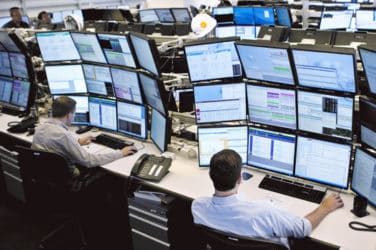A day that will live in equity market infamy.
A stock market drop that saw a plunge in stock prices in a matter of seconds.
It was the first of its kind. And hopefully the last. No, it certainly will not be the last. But with the lessons of May 6, 2010, now examined and recorded for posterity, the ‘Flash Crash’ is part of the market structure as much as Black Friday. What did we learn from the flash crash? Are we safe from another?
According to Spencer Mindlin, capital markets analysts at Aite Group, lessons were indeed learned from one of the most significant market events of the past decade.

Spencer Mindlin, Aite
“We learned about the risks lurking in capital market structure and just how integral computerized market making is to the provisioning of liquidity,” Mindlin began. “We learned how complicated order routing had become and how fragmented the U.S. equity market structure was. And we woke up to how ill-equipped the SEC was to adequately surveil and keep up with the market’s speed and level of complexity.”
It was a real eye-opener, Mindlin said. The markets are very fast indeed but is there such a thing as ‘too fast?’ He thinks not. As long as markets are continuous, Mindlin doesn’t think there is such a thing as too fast and that HFTs aren’t to blame.
“High-frequency traders play an important role in the provisioning of liquidity, and the efficiencies that they deliver, as well as other technological enhancements, has made the market the most efficient and least expensive in the world,” Mindlin said. “But there is a balance to be struck in terms of market complexity.”
Furthermore, when Mindlin looks out to the next five to ten years, Mindlin anticipates bigger problems will need to be solved than the speed of markets such as cybersecurity, unintended consequences of rapid growth in artificial intelligence and given the growth in private markets and costs to go public, existential questions about the U.S. public market and its role in capital formation for small and medium sized companies.
“Just look at the steady decline of IPOs in the U.S. recent years,” he said.

Bill Harts, MMI
Bill Harts of Modern Markets Initiative agreed that markets can’t really be too fast.
“Faster markets have brought unparalleled efficiency to trading, and investors have benefited greatly,” Harts said. “What’s worrisome is that if speed bumps ever get more than a minute amount of market share they may damage that efficiency, without solving any problem at all.”
So, what’s a regulator or Congress to do? Is a piecemeal approach the fixing the market the right approach or wipe the slate clean? Should Regulation National Market Structure be scrapped, re-written and re-implemented? Mindlin noted that regulators have already put a number of tactical fixes in place to try and reduce the likelihood of a similar occurrence, such as strengthened market maker obligations and improvements to the guardrails intended to protect the market from itself, like market circuit breakers and limit up/limit down rules.
“But, in a similar way that the 2008 GFC revealed risks to securitization, the 2010 Flash Crash woke some on Wall Street and all of Main Street up to the risks hidden in market structure and the importance it plays towards how the market operates,” he said.
And recalling the history of policy-making in the equities market, Mindlin explained that rules and regulations are usually put in place as a response to some major crisis of liquidity or confidence in the market. This in turn leads to reactionary and prescriptive rules that have unintended consequences. He thinks the Flash Crash forced the SEC to consider a change to its approach to regulation, and start from the premise of “First, do no harm.”
“And I think it also elevated their awareness that future regulation needs to be more data-driven and less politically- or reactionary-driven,” he added.
But are the regulators, such as the SEC, up to the task of policing today’s complex and computer driven market?
“I really don’t know if the SEC is yet up to the task. And if not, it’s not a problem it can easily solve for itself,” Mindlin said. “Most market participants of any consequence are already managing portfolios and trading strategies that are multi-region and multi-asset and markets are increasingly becoming linked. Yet, the SEC and CFTC regulate their respective markets separately and effectively compete. Efforts to harmonize their efforts are still are limited in scope.”
MMI’s Harts said that the SEC and the CFTC have always been able to police and examine the markets. What the Flash Crash made clear, he said, was that regulators wanted faster access to trading data to be able to respond faster to significant events.
“They’ve made tremendous progress since then with technology like MIDAS,” Harts said.
And what about the much-ballyhooed Consolidated Audit Trail? Aite’s Mindlin said that while a positive step for the SEC, the CAT still only captures U.S. equities and options data. Rather than the regulators, he sees global and multi-asset HFT firms as likely candidates and better equipped than the SEC to reconstruct and analyze what’s going on in global markets in real-time.
“While it’s probably wishful thinking, I hope that regulators around the globe will better improve their coordination and collaboration on efforts to monitor markets and implement policy. This would improve their ability to surveil, reduce global market complexity, and reduce the cost burdens to comply,” Mindlin said.
Still, the question begs to be asked, “Can we have another Flash Crash event?”
“The ‘Flash Crash’ was a result of equities driven by futures,” Harts explained. “This should remind us that the nature of interconnected markets can cause unintended consequences, and the need to coordinate proper “circuit breakers” between them.More than anything, the ‘Flash Crash’ demonstrated the need for professional risk management tools and responsible intermediaries to deploy them. For example, in markets like the NYSE trading was halted and professionals judged when to reopen trading, so there was no crash in those stocks. We also learned that market structure matters greatly and investors should be better educated about how their orders are handled.”





